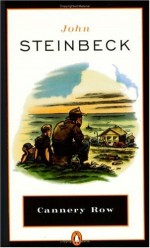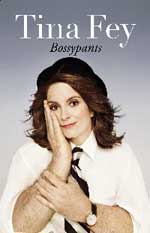Yep, we are no longer among the canine challenged. Behold young Ezio:
(The name is Italian. Ask a gamer to explain it to you if you don’t get the reference.)
We’d been talking about getting a dog since before our cat passed away, but kept putting it off for one reason or another. Then Geralyn found online photos of some dogs from a rescue shelter that were going to be at a Pets Mart up the road last Saturday and we decided that it was as good a time as any. They actually had several really great dogs there, though a litter of little shitzus (which is a phrase with just one too many “zus” to properly describe those things) was getting all the attention. Our decision came down between the beagle-something mix we eventually walked out with and a cute labrador-spaniel mix. Both were puppies, about 11 or 12 weeks old. The latter displayed a more friendly personality, but eventually we decided that at a projected 40-45 pounds he was going to grow too big. Ezio (the adoption folks had accidentally named him “Cody,” but we’re fixing that) was a bit more mellow, about the right size, and satisfied our “we want a beagle mix” criterion. So after long deliberation we went with him and it seems to have been a good choice so far.
The adoption process was more involved than I expected. I had thought that if these places could load up a vending machine full of cats and dogs, they’d be happy to let you walk up to it, purse your lips in thought for a second, then select a puppy and maybe a bag of Cool Ranch Doritos to walk out with. Instead, we had no fewer than three interviews where they tried to ask us questions not much more sly than “So, how long do you think it will be before you abandon this cute little guy in a ditch?” I guess we came across as all-American enough to warrant rescuing a dog, though, and Geralyn’s status as a stay-at-home mom probably helped a lot. So they had us fill out some paperwork, told us some cautionary and very disturbing stories about heart worms, and helped us pick out some squeaky toys.
As I said, Ezio is a pretty mellow fellow for a puppy. He doesn’t bark much (except in one situation I’ll get to in a sec), he hasn’t shown much interest in chewing things with electricity flowing through them, and he has proven himself able to endure much hugging and involuntary relocation at the hands of Mandy. He’s playful, friendly, and generally what you’d want out of a puppy.
The challenges, it seems, are going to be house breaking him and crate training him. The house breaking is to be expected, of course. He’ll usually do his business outside if we take him, but he also seems content to just drop a load on the kitchen floor if we don’t. But we’re making progress. One of the tips we’re trying to follow is to leave his scat out in the yard so that he can smell it there and associate that area with his bodily elimination. Geralyn thought this made sense in principle, but was worried about all the little brown land mines littering our yard and decided that we should wrap each piece of dog crap with a paper towel, then leave these sheets out in the yard. This is exactly as disgusting as it sounds, so I hope Ezio turns out to be a quick learner.
The other major challenge we’re facing is with crate training. Since he’s not housebroken yet, we want Ezio to stay in a crate during the night and when we have to leave him alone in the house. This is based on the principle of “don’t defecate where you sleep” which most living creatures seem to think is a right and sensible policy. So we’ve been littering his crate with dog treats and praising him when he goes in to get them, thinking that this will build positive associations with the den-like environment and we’ll be able to close the door and have him lie quietly. Ezio, on the other hand, believes that closing the door is his cue to begin howling, braying, and crying bloody murder. The first two nights we put him in our bedroom at night, thinking that our proximity would calm him. At one point he barked for two hours straight, so we relocated the crate to the basement. He still barks incessantly, but now it sounds like something in the ventilation ducts is very upset with us. Hopefully he’ll get used to it and we can move him back up to a more trafficked area if not our bedroom again. But we went through this crying through the night thing with two human youngsters already. Not keen to do it again.
Anyway, on balance he’s pretty great and makes a nice addition to the household. We’re taking him through obedience training, so I’m sure I’ll have some stories to share again in the near future. Now, here are pictures!












 You know Tina Fey, right? Writer and host of Weekend update for Saturday Night Live, actress and producer on 30 Rock, and reluctant Sara Palin impersonator. Bossypants is the result of the “hey, I should write a book!” urge that people like her get, and lucky for us it’s as funny and well written as we could want. The book is autobiographical in nature, and follows the typical template of starting with her childhood, moving through adolescence, then young adulthood, early career, then current day. For some reason I thought the book was going to deal more with motherhood, but while that particular topic is present, it’s no more so than others.
You know Tina Fey, right? Writer and host of Weekend update for Saturday Night Live, actress and producer on 30 Rock, and reluctant Sara Palin impersonator. Bossypants is the result of the “hey, I should write a book!” urge that people like her get, and lucky for us it’s as funny and well written as we could want. The book is autobiographical in nature, and follows the typical template of starting with her childhood, moving through adolescence, then young adulthood, early career, then current day. For some reason I thought the book was going to deal more with motherhood, but while that particular topic is present, it’s no more so than others.